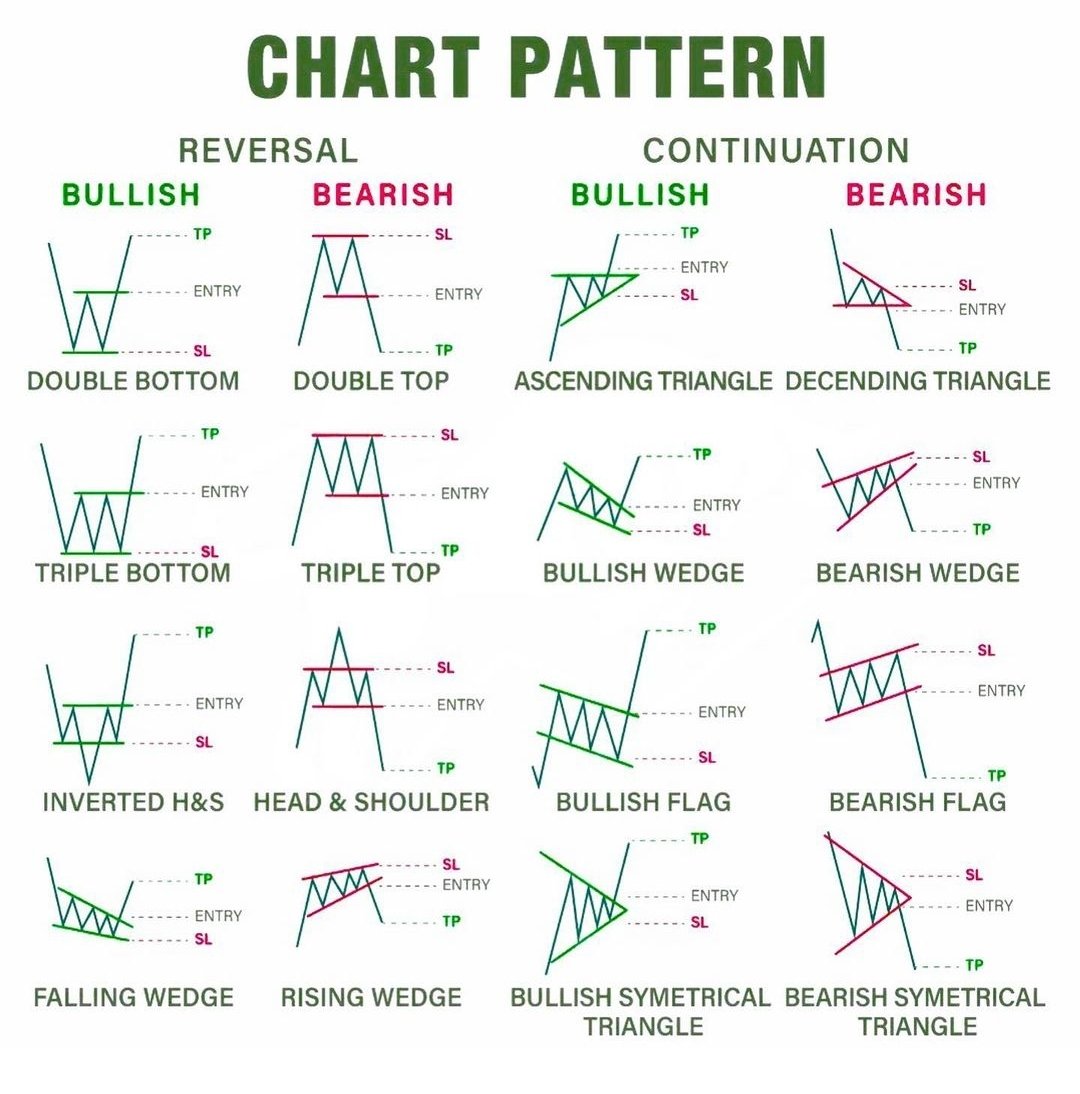Technical Analysis: Using Charts and Indicators for Market Timing and Entry Points

In the fast-paced and ever-evolving world of financial markets, investors and traders are constantly seeking tools and strategies to make well-informed decisions. Technical analysis, a method that relies on historical price and volume data to forecast future price movements, has been a cornerstone of market analysis for decades. This comprehensive and informative guide delves deep into the realm of technical analysis, focusing on how charts and indicators can be skillfully employed to identify optimal market timing and entry points. By the end of this article, you will have a strong foundation to navigate the complexities of technical analysis and leverage it to your advantage in the markets.
1. Understanding Technical Analysis

Understanding Technical Analysis
What is Technical Analysis?
At its core, technical analysis is a method used to evaluate and forecast financial asset prices by analyzing historical market data, primarily focusing on price and volume. Unlike fundamental analysis, which delves into a company’s financial health and intrinsic value, technical analysis is solely concerned with market activity and price patterns. It operates under the belief that historical price movements and trading volumes can reveal valuable insights into future price trends.
Technical analysts study past market data to identify patterns and trends, which they use to formulate potential future price movements. By recognizing these patterns and understanding how markets have reacted in the past, traders can make educated assumptions about future market behavior.
The Basics of Chart Analysis
Chart analysis is the bedrock of technical analysis. Charts provide a visual representation of an asset’s price movements over a specific period. The two most common types of charts used in technical analysis are line charts and candlestick charts.
Line charts connect the closing prices of an asset over time, allowing for a quick overview of its performance. These charts are simple and effective in providing a general sense of the asset’s price trend.
Candlestick charts, on the other hand, display the open, high, low, and close prices for each period, making it easier to identify patterns and trends. Each candlestick provides a comprehensive view of the price movement within a given timeframe.
The Role of Market Trends
Market trends are fundamental to technical analysis. Trends can be bullish (upward), bearish (downward), or sideways (horizontal). Identifying trends is crucial, as they can provide traders with insights into the overall market sentiment and direction.
Bullish trends are characterized by higher highs and higher lows, indicating a general uptrend in the asset’s price. Traders during bullish trends often seek opportunities to buy with the expectation of further price appreciation.
Bearish trends, on the other hand, are characterized by lower highs and lower lows, indicating a general downtrend in the asset’s price. During bearish trends, traders may look for short-selling opportunities, anticipating further price declines.
Sideways trends, also known as consolidations or ranges, occur when an asset’s price moves within a relatively narrow range. Traders may consider waiting for a breakout or breakdown from the range before taking positions.
Trendlines are an essential tool in technical analysis, drawn on charts to help visualize the trend’s trajectory. These lines serve as dynamic support and resistance levels, providing traders with crucial decision-making points.
Support and Resistance Levels
Support and resistance levels are key concepts in technical analysis. A support level is the price level where an asset’s price has historically had difficulty falling below, and a resistance level is the price level where an asset’s price has historically had difficulty surpassing. These levels indicate areas of supply and demand and can help traders make informed decisions about entry and exit points.
When the price approaches a support level, it may encounter increased buying activity, preventing it from declining further. Conversely, when the price nears a resistance level, selling pressure may increase, preventing it from rising higher. The ability to identify and interpret these levels is a crucial skill for traders to navigate the markets effectively.
2. Technical Indicators and Oscillators

Technical Indicators and Oscillators
Moving Averages
Moving averages are fundamental technical indicators that smooth out price data over a specific period, helping traders identify trends and potential entry or exit points. The two most commonly used moving averages are the simple moving average (SMA) and the exponential moving average (EMA).
The simple moving average (SMA) calculates the average price of an asset over a defined number of periods. For example, a 50-day SMA calculates the average of the asset’s closing prices over the past 50 days. Each new day, the oldest data point is dropped, and the most recent data point is added.
The exponential moving average (EMA), on the other hand, assigns more weight to recent prices, making it more responsive to recent market changes. This means that the EMA reacts more quickly to price movements, making it useful for short-term traders.
Moving averages can be used in various ways. When the asset’s price crosses above its moving average, it may signal a potential uptrend and a buying opportunity. Conversely, when the asset’s price crosses below its moving average, it may indicate a potential downtrend and a selling opportunity.
Relative Strength Index (RSI)
The Relative Strength Index (RSI) is a momentum oscillator that measures the speed and change of price movements. The RSI oscillates between 0 and 100 and is used to determine overbought and oversold conditions in an asset.
An RSI above 70 suggests that the asset is overbought, meaning it has experienced a significant price increase in a short period. Traders may interpret this as a potential reversal signal, indicating that the asset may be due for a price correction.
Conversely, an RSI below 30 indicates that the asset is oversold, meaning it has experienced a significant price decline in a short period. Traders may interpret this as a potential buying signal, indicating that the asset may be undervalued and due for a price bounce.
The RSI is a valuable tool for traders to gauge the asset’s momentum and to identify potential trend reversals.
Moving Average Convergence Divergence (MACD)
The Moving Average Convergence Divergence (MACD) is a trend-following momentum indicator that reveals the relationship between two moving averages of an asset’s price. It consists of the MACD line and the signal line.
The MACD line is calculated by subtracting the longer-term moving average (often the 26-day EMA) from the shorter-term moving average (often the 12-day EMA). The signal line is a moving average of the MACD line (often the 9-day EMA).
When the MACD line crosses above the signal line, it generates a bullish signal, indicating a potential uptrend. Conversely, when the MACD line crosses below the signal line, it generates a bearish signal, indicating a potential downtrend.
Traders often use the MACD to confirm trend changes and identify potential entry or exit points. The MACD histogram, which shows the difference between the MACD line and the signal line, provides further insights into the strength of the trend.
Bollinger Bands
Bollinger Bands are a versatile and widely used technical indicator. They consist of a moving average (typically the SMA) and two standard deviations plotted above and below the moving average. The bands dynamically adjust based on market volatility.
Bollinger Bands serve multiple purposes in technical analysis. Firstly, they can be used to identify periods of high and low volatility. When the bands widen, it indicates increased volatility, and when they narrow, it indicates decreased volatility.
Secondly, Bollinger Bands can help traders spot potential trend reversals. When the price moves close to the upper band, it may indicate that the asset is overbought, potentially due for a price correction. Conversely, when the price moves close to the lower band, it may indicate that the asset is oversold, potentially signaling a price bounce.
Bollinger Bands provide traders with valuable information about an asset’s price volatility and potential trend changes, helping them make more informed decisions.
3. Chart Patterns and Trend Analysis

Chart Patterns and Trend Analysis
Common Chart Patterns
Chart patterns are visual formations that can signal potential trend reversals or continuations. They are identified based on the price action displayed on the chart. Some common chart patterns include:
Head and Shoulders: This pattern is a reliable reversal pattern that often occurs after a bullish trend. It consists of three peaks, with the middle peak (the head) being higher than the other two (the shoulders). When the price breaks below the neckline (a support level connecting the lows of the two shoulders), it may indicate a trend reversal and a potential downtrend.
Double Tops and Bottoms: These patterns consist of two peaks (double tops) or two troughs (double bottoms) that are approximately at the same level. They are often seen as signals of trend reversal. A break below the neckline (in the case of double tops) or above the neckline (in the case of double bottoms) confirms the pattern.
Triangles: Triangles are chart patterns characterized by converging trendlines. They can be symmetrical, ascending, or descending. When the price breaks out of the triangle, it may signal a significant price move in the direction of the breakout.
Rectangles: Rectangles are consolidation patterns that occur when the price trades within a relatively narrow range. The upper boundary acts as resistance, and the lower boundary acts as support. A breakout above or below the rectangle signals a potential trend continuation or reversal.
Traders often use these chart patterns to anticipate potential breakouts or breakdowns in price, allowing them to position themselves for profitable trades.
Fibonacci Retracement
Fibonacci retracement is a popular tool used in technical analysis to identify potential support and resistance levels. It is based on the Fibonacci sequence, a series of numbers in which each number is the sum of the two preceding ones: 0, 1, 1, 2, 3, 5, 8, 13, 21, and so on.
In Fibonacci retracement, traders draw lines at specific percentages (Fibonacci levels) representing potential retracement levels of a price move. The most common retracement levels are 23.6%, 38.2%, 50%, 61.8%, and 78.6%.
Traders utilize these levels to gauge potential price reversals or corrections. If an asset’s price retraces to one of these levels and finds support or resistance, it may indicate a possible reversal in the price trend.
Fibonacci retracement levels are often used in conjunction with other technical tools to confirm potential entry or exit points.
Ichimoku Cloud
The Ichimoku Cloud, also known as Ichimoku Kinko Hyo, is a comprehensive technical indicator that provides insights into support and resistance levels, trend direction, and potential entry and exit points.
The Ichimoku Cloud consists of five lines:
- Tenkan-sen (Conversion Line): This line is calculated as the average of the highest high and the lowest low over the past nine periods.
- Kijun-sen (Base Line): This line is calculated as the average of the highest high and the lowest low over the past 26 periods.
- Senkou Span A (Leading Span A): This line represents the midpoint between the Tenkan-sen and the Kijun-sen and is plotted 26 periods ahead.
- Senkou Span B (Leading Span B): This line is calculated as the average of the highest high and the lowest low over the past 52 periods and is plotted 26 periods ahead.
- Chikou Span (Lagging Span): This line represents the current closing price, plotted 26 periods behind.
The space between Senkou Span A and Senkou Span B creates the Ichimoku Cloud, which is colored differently depending on whether the price is above or below the cloud.
Traders use the Ichimoku Cloud to identify potential support and resistance levels, assess trend direction, and determine entry and exit points. When the price is above the cloud, it indicates a bullish trend, and when it is below the cloud, it indicates a bearish trend.
Moving Average Envelopes
Moving Average Envelopes are another technical indicator that traders use to identify potential overbought and oversold conditions and to gauge price extremes. They consist of a moving average (typically the SMA) and two bands plotted above and below the moving average.
The upper band is calculated by adding a certain percentage to the moving average, and the lower band is calculated by subtracting the same percentage from the moving average. The width of the envelope can be adjusted to suit the trader’s preferences and the asset’s volatility.
When the price moves close to the upper band, it may indicate that the asset is overbought, potentially due for a price correction. Conversely, when the price moves close to the lower band, it may indicate that the asset is oversold, potentially signaling a price bounce.
Traders often use Moving Average Envelopes in conjunction with other technical indicators to confirm potential entry or exit points.
4. Applying Technical Analysis to Trading Strategies

Applying Technical Analysis to Trading Strategies
Swing Trading
Swing trading is a popular trading strategy that aims to capture short- to medium-term price movements. Traders employing this strategy use technical analysis to identify potential entry and exit points during a trend’s swing phases.
Swing traders may hold positions for several days or weeks, profiting from short- to medium-term price swings. They often look for assets that are trending within a well-defined range, taking positions near support levels during uptrends and near resistance levels during downtrends.
One of the key advantages of swing trading is that it allows traders to avoid the stress of day trading while still profiting from market swings. However, swing trading requires a disciplined approach to risk management, as holding positions for extended periods can expose traders to market fluctuations.
Day Trading
Day trading involves executing trades within the same trading day, with all positions closed before the market closes. Day traders rely heavily on technical analysis, using charts and indicators to spot intraday trends and volatility.
Day traders may make multiple trades in a single day, capitalizing on small price movements. They often use short-term charts, such as one-minute or five-minute charts, to make quick decisions.
Due to the short duration of positions, day trading requires a significant time commitment and a high level of focus. Traders must constantly monitor the markets and be ready to act swiftly. Risk management is crucial in day trading, as positions are held for a short duration, and price movements can be rapid.
Position Trading
Position trading is a long-term strategy where traders hold positions for extended periods, ranging from weeks to months or even years. Technical analysis helps position traders identify strong trends and potential entry points for long-term investments.
Position traders focus on identifying assets with strong fundamental and technical attributes that are likely to appreciate over the long term. They are less concerned with short-term price fluctuations and focus on capturing the overall trend.
Patience and discipline are vital for successful position trading. Position traders must be willing to withstand short-term market volatility and avoid making impulsive decisions based on temporary price movements.
Algorithmic Trading
Algorithmic trading, or algo trading, involves using computer programs to execute trading strategies based on pre-defined criteria. These algorithms often incorporate technical indicators and chart patterns to automate trading decisions.
Algorithmic trading has gained popularity due to its efficiency and ability to analyze vast amounts of data quickly. The use of algorithms helps eliminate emotional biases and ensures that trading decisions are based on objective criteria.
Traders can develop their algorithms or use pre-existing ones. Algorithmic trading strategies can vary widely, from simple moving average crossovers to complex machine learning models.
One of the advantages of algorithmic trading is the ability to execute trades at high speeds, taking advantage of even the smallest market inefficiencies. However, traders must thoroughly test and optimize their algorithms to ensure their effectiveness.
5. Pitfalls and Limitations of Technical Analysis

Pitfalls and Limitations of Technical Analysis
Overfitting and Data Snooping
One of the significant challenges with technical analysis is overfitting. This occurs when a trading strategy is so finely tuned to historical data that it performs poorly when applied to new, unseen data. Overfitting can lead to false signals and unreliable performance in live markets.
Traders should be cautious of over-optimizing their strategies based on historical data, as this may not reflect how the strategy will perform in the future. A good practice is to test the strategy on out-of-sample data to gauge its effectiveness.
Emotional Bias
While technical analysis relies on objective data, emotional bias can still influence traders’ decisions. Emotions such as fear and greed can lead to impulsive trading and undermine the efficacy of technical analysis.
To counter emotional bias, traders must follow a well-defined trading plan and stick to their strategies. Implementing strict risk management techniques can also help prevent emotional decision-making.
External Factors
Technical analysis does not take into account external factors that can influence market movements. Macroeconomic events, geopolitical developments, or unexpected news releases can create significant market movements that may not be reflected in the historical price data alone.
Traders should be aware of potential external factors and consider them alongside technical analysis to make more informed decisions.
Periodicity and Timeframes
The choice of timeframe can significantly impact the interpretation of technical indicators and chart patterns. What may seem like a strong signal on a shorter timeframe might appear insignificant on a longer one. Traders should be aware of the periodicity they are using and consider multiple timeframes for confirmation.
For example, a moving average crossover that indicates a potential trend reversal on a daily chart might not hold the same weight on a weekly chart.
Conclusion
Technical analysis, with its reliance on charts and indicators, provides traders and investors with valuable insights into market trends and potential entry and exit points. By understanding the basics of technical analysis, exploring various technical indicators, recognizing chart patterns, and applying it to different trading strategies, market participants can make more informed decisions.
However, traders should also be aware of the limitations and pitfalls of technical analysis. Overfitting, emotional bias, external factors, and periodicity considerations are important factors to consider while employing technical analysis in trading.
To achieve success in the markets, traders should adopt a balanced approach by combining technical analysis with other forms of analysis, such as fundamental analysis, to gain a comprehensive understanding of the market dynamics.
FAQs
- What is technical analysis, and how does it differ from fundamental analysis?
Technical analysis is a method used to evaluate and forecast financial asset prices by analyzing historical market data, primarily focusing on price and volume. It operates under the belief that past price movements and trading volumes can reveal valuable insights into future price trends. On the other hand, fundamental analysis delves into a company’s financial health and intrinsic value, analyzing factors such as earnings, revenue, and industry trends. While technical analysis is purely concerned with market activity and price patterns, fundamental analysis considers the underlying factors that drive the company’s value and prospects.
- How can beginners start with technical analysis?
For beginners, it is essential to start with the basics of chart analysis and understanding trends. Familiarize yourself with different chart types, such as line charts and candlestick charts, and learn how to draw trendlines and identify support and resistance levels. Moving averages are a good starting point for understanding trend direction. As you progress, delve into technical indicators like the Relative Strength Index (RSI) and Moving Average Convergence Divergence (MACD). Practice on historical data and demo trading platforms to gain confidence in your analysis.
- Can technical analysis be used for any financial asset?
Yes, technical analysis can be applied to a wide range of financial assets, including stocks, commodities, forex, cryptocurrencies, and indices. The underlying principle remains the same – analyzing historical price data to identify patterns, trends, and potential entry or exit points. However, it’s important to consider the uniqueness of each asset class and adjust your analysis accordingly.
- How can moving averages help in identifying trends?
Moving averages are widely used for trend identification. The simple moving average (SMA) smooths out price data over a specified period, providing a clearer view of the overall trend. When the asset’s price is above the SMA, it indicates an uptrend, and when it’s below the SMA, it indicates a downtrend. The exponential moving average (EMA) is more responsive to recent price changes, making it useful for short-term trend identification.
- Are there any risks associated with using technical analysis?
While technical analysis can provide valuable insights, it is not foolproof. One of the main risks is overfitting, where a trading strategy performs well on historical data but fails to deliver in live markets due to overly optimizing the strategy. Emotional biases, such as fear and greed, can also undermine the effectiveness of technical analysis. Additionally, technical analysis does not account for external factors like economic events or unexpected news releases, which can create sudden market movements.
- How do traders use Bollinger Bands effectively?
Traders use Bollinger Bands to gauge volatility and potential trend reversals. When the asset’s price moves close to the upper band, it may indicate that the asset is overbought, signaling a potential price correction. Conversely, when the price moves close to the lower band, it may indicate that the asset is oversold, signaling a potential price bounce. Traders may also look for Bollinger Band Squeeze, where the bands contract, indicating a period of low volatility and potential impending price breakout.
- Can chart patterns be used in combination with technical indicators?
Yes, many traders use chart patterns in conjunction with technical indicators to confirm signals and improve the accuracy of their analysis. For example, if a chart pattern suggests a potential trend reversal, traders may look for confirmation from an oscillator like the RSI, which indicates overbought or oversold conditions. Combining multiple tools can provide a more comprehensive and robust analysis.
- What are some essential skills for successful technical analysis?
Successful technical analysis requires several skills. Firstly, traders must have a solid understanding of technical indicators, chart patterns, and trendlines. They should also be proficient in reading and interpreting charts, recognizing patterns, and identifying support and resistance levels. Additionally, risk management skills are crucial to protect capital and manage potential losses.
- How can traders avoid emotional bias in their technical analysis?
Traders can avoid emotional bias by creating and following a well-defined trading plan. Having specific entry and exit criteria based on technical analysis reduces the influence of emotions on trading decisions. Sticking to the plan and not deviating due to short-term market movements is essential. Regularly reviewing and updating the trading plan based on objective analysis can help maintain discipline.
- Is technical analysis suitable for long-term investors?
While technical analysis is commonly associated with short-term trading, it can also be beneficial for long-term investors. Long-term investors can use technical analysis to time their entry and exit points for investments. Chart patterns and technical indicators can provide insights into potential buying opportunities during pullbacks or downtrends and selling opportunities during overbought conditions. However, long-term investors should also consider fundamental factors and the overall market context in their decision-making process.

Content List
editor's pick
news via inbox
Nulla turp dis cursus. Integer liberos euismod pretium faucibua






